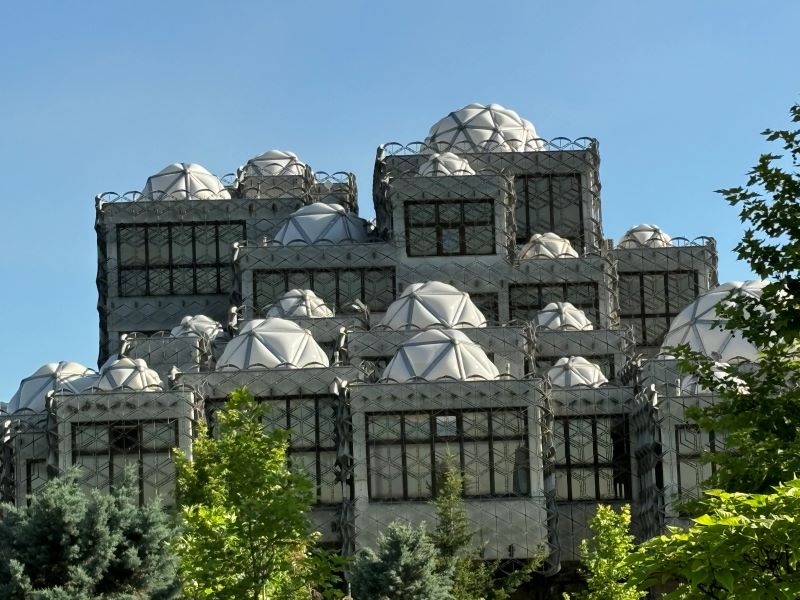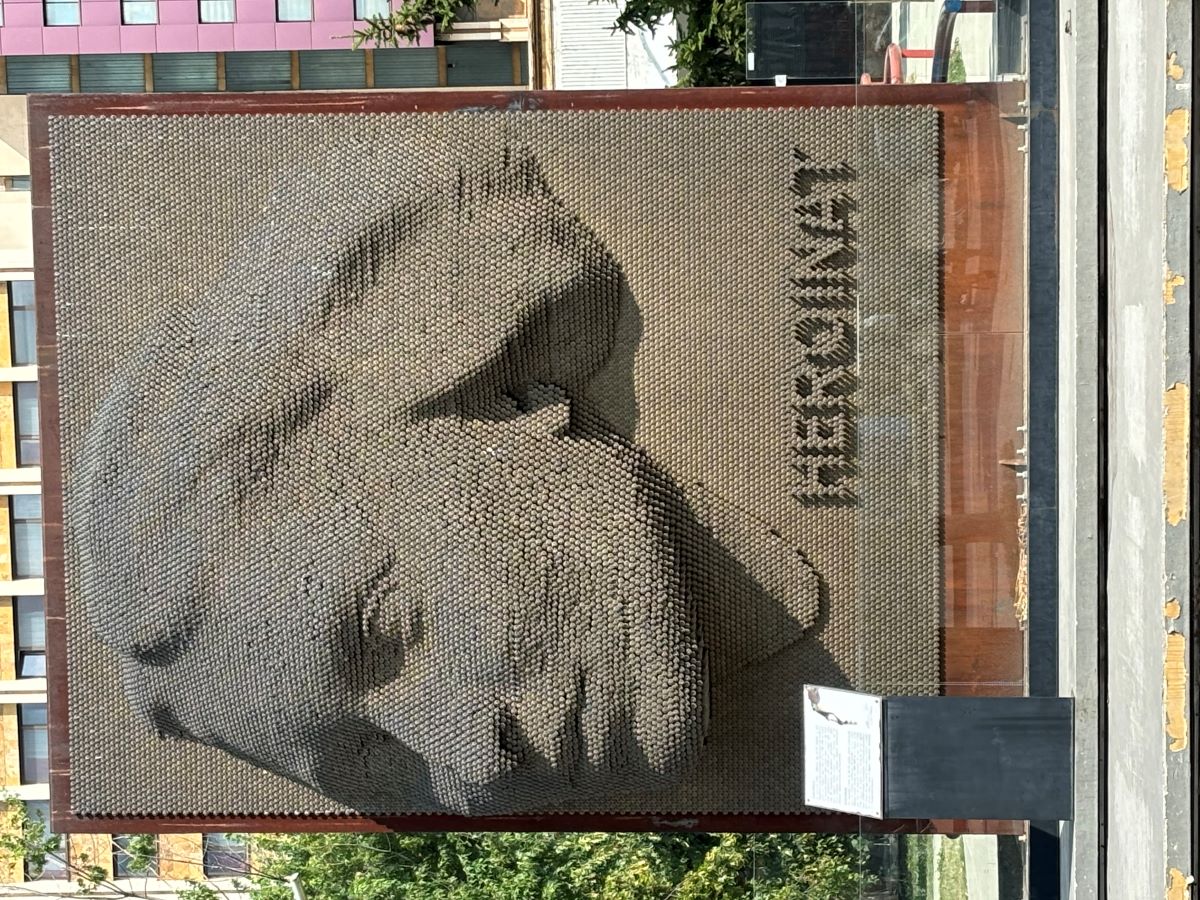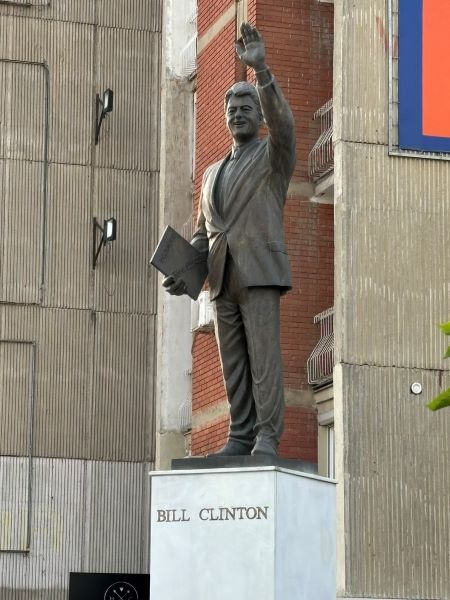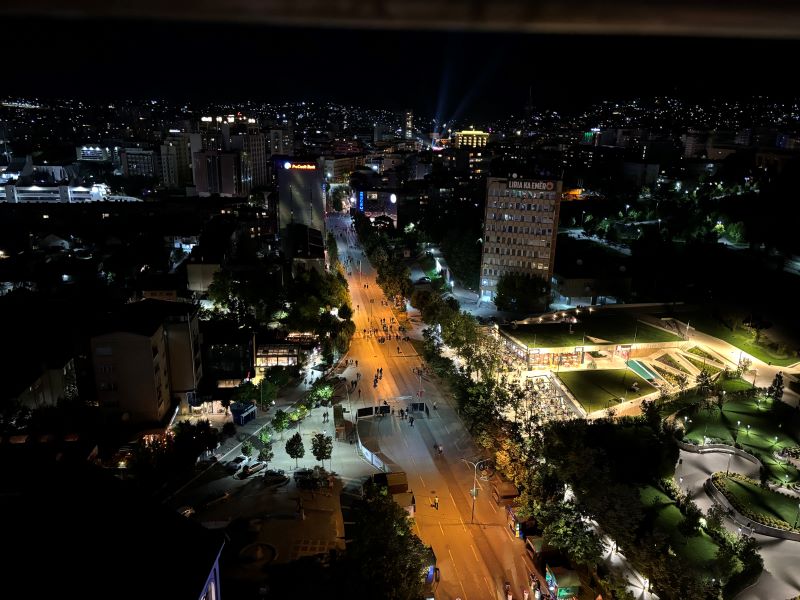Through its vibrant culture, Prishtina is attracting an increasing number of tourists, challenging the once-dominant stereotype of Kosovo as a troubled place to visit.
Despite stereotypes of Kosovo’s capital as being uninteresting and dangerous, Dyonne Beaudine van Hoorn found Prishtina to be very safe, along with having a lively youth culture.
“Everyone thought I was crazy,” , van Hoorn, a Dutch student interning at the University of Prishtina’s International Relations Office, told BIRN, sharing the misconceptions her family and relatives, similar to many western Europeans, had about the youngest country in Europe.
“I enjoyed walking through different parts of the city,” she said, mentioning frequent walks taking her within minutes to far-flung areas such as the famous Newborn Monument and the City Park.
“You won’t get an experience like this in any other country,” she believes.
Even though the Kosovo war ended a quarter-century ago, many Westerners still have a negative perception of the country. That is, until they visit and see that post-war Kosovo has been rebuilt, and that the capital city of Prishtina is now a cultural hub for youth.
Prishtina offers rich history, diverse culture, and constant activities for tourists, along with an intimacy that many tourist hotbeds lack. It also serves as a hub for easy and convenient travel to other Balkan nations, quickly transforming it into a gateway to the Balkans.
What Can Prishtina Offer?

National Library of Kosovo located in University of Prishtina Campus: Photo: BIRN/Samuel Seward
A private, full-day tour of Prishtina offered by TripAdvisor takes visitors to the Ethnographic Museum and Mother Teresa Cathedral, while also passing by the Newborn Monument, the Kosovo Museum, Skanderbeg Statue, and the Prishtina National Library. The tour also stops at the Gracanica Orthodox Monastery, in the Serb majority municipality of Gracanica, which is very close to the capital. This tour provides an in-depth look at Prishtina’s history.
The Ethnographic Museum, located across the road from Independence Park, is a traditional 18th century house that was converted into a museum in 2006. The museum documents the life of Emin Gjinolli and his family, offering an insight into clothing, rituals, handcrafts, and traditional architecture of this time period.
The Mother Teresa Cathedral was consecrated in 2017, honoring the recently deceased Mother Teresa, who had begun her sacred mission an hour away in Letnica. Tourists can now take an elevator to the top of the cathedral and experience the phenomenal views Prishtina has to offer.

‘Heroinat’ Monument in Prishtina, dedicated to women who suffered sexual violence during the war in Kosovo, Photo: BIRN/Samuel Seward
The Newborn Monument was unveiled on February 17th, 2008, the day that Kosovo declared its independence from Serbia, representing both the birth of a new nation and the struggles that Kosovo had undergone in achieving independence.
The Kosovo Museum, located in a part of the city that connects the Old Town with the city center, was opened in 1949. It displays documents, archaeological discoveries, and artifacts dating back to the Bronze Age, showing the timeline of ethnic Albanians who resided in Kosovo up to the country’s modern history, including the 1998-1999 Kosovo war and its aftermath.
The main statue in Prishtina’s main square, close to the government and parliament buildings, shows a bust of Kosovo’s national hero, Gjergj Kastriot Skanderbeg, who lead a rebellion against the Ottomans in the 15th century, not only displaying Kosovo’s diverse history, but also the proud relationship the nation has with Albania.
Prishtina’s National Library, opened in 1982, was meant as a unifying symbol between Serbs and Albanians in the region. The cube and dome motif that constitute the building are representative of features seen in both Ottoman and Byzantine and Ottoman architecture, both of which are common legacies in the Balkans. Nowadays, it serves both as a place for university students to study, as well as a primary tourist attraction due to the unique design of the building.
Gracanica Monastery was constructed on ruins of a previous church, and has stood since the 14th century, albeit with numerous restorations due to damage from conflicts in the Middle Ages. It still stands to this day, preserving a unique piece of Balkan Byzantine architecture.
The National Gallery of Kosovo was founded in 1979 as an attempt to spread artistic work from around the world right in Prishtina, with hundreds of international and local artists holding exhibitions there.
Shkamb Jaka, a representative from the National Gallery, also notes their attempts to increase tourism, telling BIRN that the gallery’s constant promotion of exhibitions”has helped increase exposure. Jaka mentions their different programs available at the gallery for new tourists, including “a very active education program for different ages,” made up of “workshops, mediated tours, and talks with artists and curators,” which are always open to the public..”
These attempts have resulted in an increase in tourism for the National Gallery. Jaka told BIRN that the gallery has “seen that the number of visitors has increased by 20-30 percent,” over the last year. Their efforts have paid off and made the National Gallery of Kosovo a cornerstone of the rapidly growing cultural scene in Prishtina.

Former US President Bill Clinton Statue in Prishtina, Kosovo, Photo: BIRN/Samuel Seward
Enes Toska, the co-founder of GUIDEKS, the official Association of Tour Guides of Kosovo, notes that foreign and local visitors have been coming to Prishtina at an increased rate. Therefore, the National Gallery is not the only Prishtina cultural landmark that is experiencing an increase in tourism, as summer tourists look to explore everything Prishtina has to offer.
Prishtina also has appeal outside of cultural attractions, as it has a vibrant social scene, consistently engaging tourists in unique and appealing activities. Emir Özen, a Turkish student who came to Kosovo to attend the University of Prishtina’s summer courses, advocates for participating in the city’s social life. He told BIRN that “there’s always some sort of activity going on,” in the city center. The main square of Prishtina offers a great variety of ways for tourists to participate in the culture of the city, ranging from the farmer’s market that occurs every Tuesday, to the Football Fan Fest that popped up during this year’s Euros, and massive viewing parties of this year’s Paris Olympics. That is not even including the Sunny Hill Festival, the largest music festival held in the nation that just concluded several days ago, and featured world-famous acts such as Bebe Rexha and Stormzy.
Toska also advocates for participation in this social sphere, telling BIRN that you “cannot ignore Prishtina’s coffee-culture [and] nightlife”.
Naile Çekaj, a tour guide and colleague of Toska’s at GUIDEKS, further advocates for social participation, telling BIRN that “you [will] find the main streets and boulevards [filled] with people buzzing in their conversations with friends and family,” creating a welcoming atmosphere for any tourist.
Arguably the most appealing part of Prishtina is the ease in which tourists are able to explore different areas of Kosovo and the Balkans. Buses departing from the Prishtina Bus Station can take tourists anywhere from nearby cities Peja and Prizren, to Balkan tourist hotspots such as Greece’s Thessaloniki, Montenegro’s Budva, or even ever-booming Croatia’s Dubrovnik.
Boom in Tourism

Prishtina Aerial View, Photo: BIRN/Samuel Seward
Prishtina has been experiencing a boom in tourism over the last decade, especially during the summer months. What has caused this boom? The answer is simple —Prishtina has a vast wealth of cultural events, historical artifacts, and museums to attract a variety of foreign visitors interested in exploring the new nation. These attractions, coupled with affordable travel prices, enables tourists to explore different areas of the Balkans with ease.
“In 2023 we had over 600,000 visitors,” Toska told BIRN, representing a 60 percent increase in tourists from 2022. Furthermore, Toska told BIRN that 60 percent of the tourists visiting Prishtina were foreign, indicating that the tourist boom has not just stemmed from visitors within Kosovo.
Another first time tourist, Phillippe from Paris, France, told BIRN that he had never met someone who had traveled to Kosovo, which is a common experience for many tourists in Prishtina, given the recency of the country’s nationhood, along with concerns that prospective tourists have when considering whether they should visit the nation.
Although these concerns are present for people who have not visited Prishtina, oftentimes, people are compelled to return after their initial visit has concluded. Özen had previously come to Prishtina as a participant in a project with one of his professors. Özen told BIRN that “Prishtina is a city that makes you keep coming back to it,” further noting that “Prishtina definitely has a lot to offer.”
GUIDEKS’s goal, as Çekaj told BIRN, is to “present the reality and the beauty of Kosovo/Prishtina,” further noting that tour guides “are like an ambassador” to any tourist. Given the recent increase of foreign tourists to Prishtina, it is clear that the organization, and Prishtina itself, has created a warm and welcoming atmosphere for tourists, with the summer months serving as an ideal visitation period.
Please enable JavaScript to view the comments powered by Disqus.